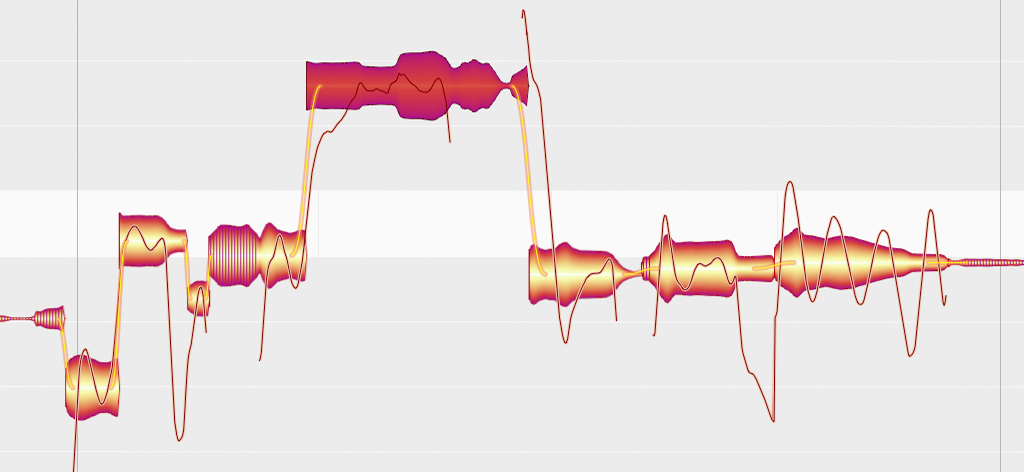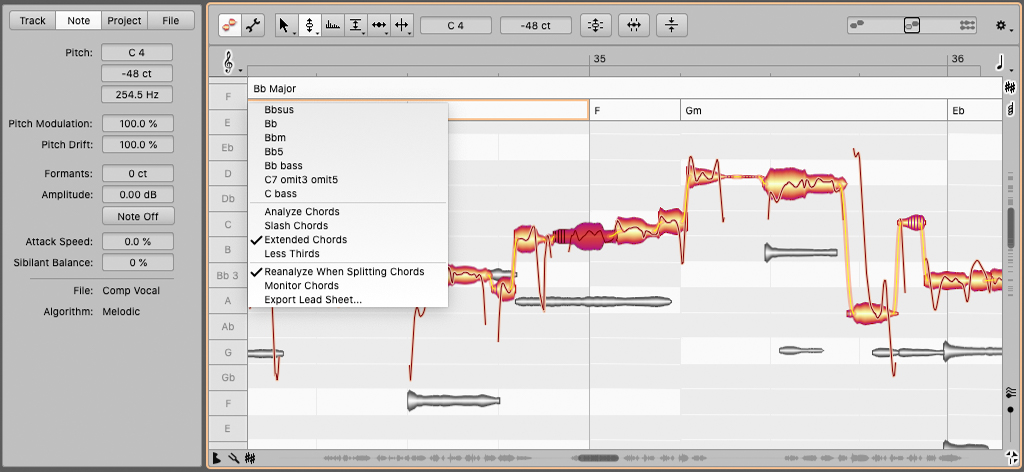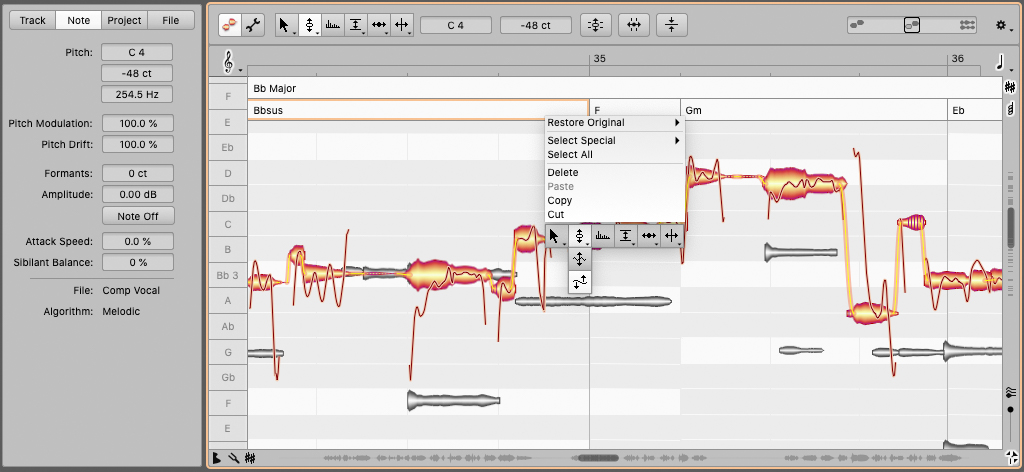Melodyne 5 Review
- May 20, 2021
- by Steve Castellano
- Product Intelligence Report
Revered science fiction author Arthur C. Clarke famously wrote “Any sufficiently advanced technology is indistinguishable from magic.” From where I sit, Melodyne still qualifies as sufficiently advanced to fit that description, even 20 years after it was first introduced, offering a revolutionary way to adjust, correct, and reshape the pitch of recorded audio. I know a bit about Fourier transforms, in principle, but the chasm between what I know and what Melodyne does is still pretty vast.
I still marvel at Direct Note Access (DNA), for example, which was added to the mix in 2008, giving users the ability to manipulate individual notes in a polyphonic recording. A stubborn part of my brain still doesn’t understand how that can be possible. Imagine going back in time to someone agonizing over bouncing down tracks on a 4-track tape deck, after which those tracks would be carved in stone, unchangeable, forever, and saying, “yeah, we just reach in there and move notes around now.” You’d have to be some kind of wizard.
Fortunately for me, you don’t need to know how it works to be able to make it work. And as of Melodyne 5, making it work keeps getting easier and faster.
A bit of background
For those of you who are unfamiliar with Melodyne, it’s a tricky one to categorize. It is often described as pitch correction software, and while it certainly excels at that, pitch correction is only part of the story. Melodyne gives you access to the elements that make up sounds in an extraordinary way: you can edit the pitch contour of a note independently from its duration and timbre (timbre being the harmonic contents of a sound that allow your brain to tell the difference between one instrument and another). And unlike many other methods of pitch correction, the end result can sound so natural that it’s indistinguishable from an unedited recording.

There are a few ways to get audio into Melodyne. You can record audio directly into the app, or, if your audio has already been recorded, you can import it or just drag and drop it into the interface. Melodyne also operates as a plugin, which is often the most intuitive way to address imperfections in an existing session. Once analyzed, your audio is displayed as what are cheerfully referred to as blobs – graphic representations of individual notes, resembling a zoomed-out audio waveform, with width representing amplitude. A red line running through the middle of each blob indicates the actual pitch variations, such as vibrato and drift. An orange line indicates transitions within a syllable from one note to another.
Given fine control of these elements, you can certainly adjust the pitch of a note if you need to. Melodyne provides you with tools that allow you to reduce or expand pitch variations, like vibrato, or reshape the pitch contour of a melody in its entirety. You can lengthen or shorten notes, adjust individual volumes of notes in a polyphonic recording, and adjust the harmonics of an individual note or an entire track. The results are generally quite transparent – and I say “generally” because this amount of control allows you to explore and reimagine sounds in dramatic ways if you choose to.
Separating the pitch from the noise
Melodyne 5 introduces a number of improvements to existing functionality as well as new features. It now automatically recognizes and distinguishes pitched and non-pitched elements of sounds, allowing you to manipulate them independently without separating them manually first. As a result, you can adjust the pitch of a vocal track with natural results more easily – as Melodyne understands that while a singer’s pitch may change, the pitch of sibilants like ‘s’ and ‘ch’ do not. Likewise, if you choose to lengthen a syllable, the sibilants themselves do not change duration.
An added benefit of this is that Melodyne can be used as a precision de-esser. Rather than applying a traditional de-esser, which often requires fine-tuning and automation to achieve the desired result, you can just grab a sibiliant that jumps out at you in a track and adjust it surgically or select multiple instances to adjust as a group – all without adversely affecting other elements in the track.
Lifting chords
Melodyne 5 also introduced the Chord Track and Chord Grid, which have some far-reaching applications for songwriters and composers as well as engineers and producers. The Chord Track feature extrapolates the pitch information in a recording into chords at the touch of a button. The Chord Grid then allows you to visualize the chord structure of a tune as a background to your workspace. Even if you have no music theory training, distinguishing between chord tones and non-chord tones becomes as easy as telling white from grey. The Correct Pitch Macro can then be used to automatically correct selected blobs to the scale of the chords they occur in.

I tested the Chord Track feature with a few different source tracks to see how accurate it is. In analyzing the backing track of a triadic power-ballad type arrangement, it was pretty much dead on. More complex material required tweaking. In fairness, lifting a chord chart involves a certain amount of subjectivity. When is a C6 an Am7/C? To accommodate for this, you can access a drop-down menu from each chord in the Chord Track with alternate naming suggestions for the detected chords.
If you’re wondering if you can use Melodyne to make lifting tunes for the cover band a little easier, it can certainly help, and get you most of the way there in some cases. There is, as of version 5.1, an Export Lead Sheet option, which generates a MIDI file of the chords, which I thought was an interesting feature, though not quite what I expected – I hope to see a melody track option included in a future update.
Ease of use
Melodyne does a great job of making the complexity of harmonic analysis and manipulation very easy. The 14 basic editing tools fall neatly into six categories – Main/move/zoom, Pitch, Formant, Amplitude, Time, and Note Separation – and the entire palette can be accessed contextually with a right mouse click. Three macros, Correct Pitch, Quantize Time, and Note Levelling, allow you to apply corrections with variable degrees of intensity to selections or entire tracks, so that you can get particularly unruly source material into the ballpark before you start your fine editing.

The online manual also deserves a mention. Via drop-down menus, users can access customized manuals for each of the four editions (editor, studio, assistant, and essential) depending on whether they’re using Melodyne as a stand-alone app or together with one of seven popular DAWs. Supplementing these manuals are training tutorials and over two dozen videos. They have truly gone above and beyond in an effort to make this software comprehensible and useful to musicians as well as engineers.
Conclusions
What Melodyne 5 does is quite impressive. It should be considered an essential tool for engineers and producers, if only for its ability to rescue a flawed recording after the performer has gone home. It also opens up a host of creative possibilities, from arranging to sound design – and its four-tiered editions put some of its most powerful features within reach of any aspiring producer who can afford an audio interface. If you record, produce or compose, Melodyne can almost certainly expand your horizons.
In fact, we’ve only scratched the surface here as far as Melodyne’s features and capabilities are concerned. We’ll be taking a deeper dive into some use cases here in the near future. Stay tuned!
Author

Steve Castellano
Steve Castellano is a musician and writer living in Toronto, Canada. He holds a music degree from York University, where his focus was electronic music and composition. He currently records and performs modular electronic music under the name Elettronica Sperimentale.